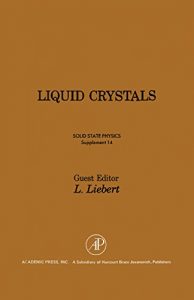Liquid Crystals provides information pertinent to the characterization and understanding of the liquid crystalline or ordered fluid. This book presents the important developments in the understanding of liquid crystals.
Organized into seven chapters, this book begins with an overview of the various relations between liquid crystals and polymers. This text then examines the synthesis of very simple families of liquid crystals of the types required by the laboratory physicists. Other chapters consider the process of reorientation of the permanent dipole moments connected with changes in the field, which requires a definite time interval. This book discusses as well the lyotropic liquid crystals that can be formed by amphiphilic molecules as different as lipids and copolymers. The final chapter deals with the aspect of molecular pattern, which seems to be the most underestimated in the consideration of biological phenomena found in liquid crystal.
This book is a valuable resource for scientists, physicists, and chemists.
Organized into seven chapters, this book begins with an overview of the various relations between liquid crystals and polymers. This text then examines the synthesis of very simple families of liquid crystals of the types required by the laboratory physicists. Other chapters consider the process of reorientation of the permanent dipole moments connected with changes in the field, which requires a definite time interval. This book discusses as well the lyotropic liquid crystals that can be formed by amphiphilic molecules as different as lipids and copolymers. The final chapter deals with the aspect of molecular pattern, which seems to be the most underestimated in the consideration of biological phenomena found in liquid crystal.
This book is a valuable resource for scientists, physicists, and chemists.






